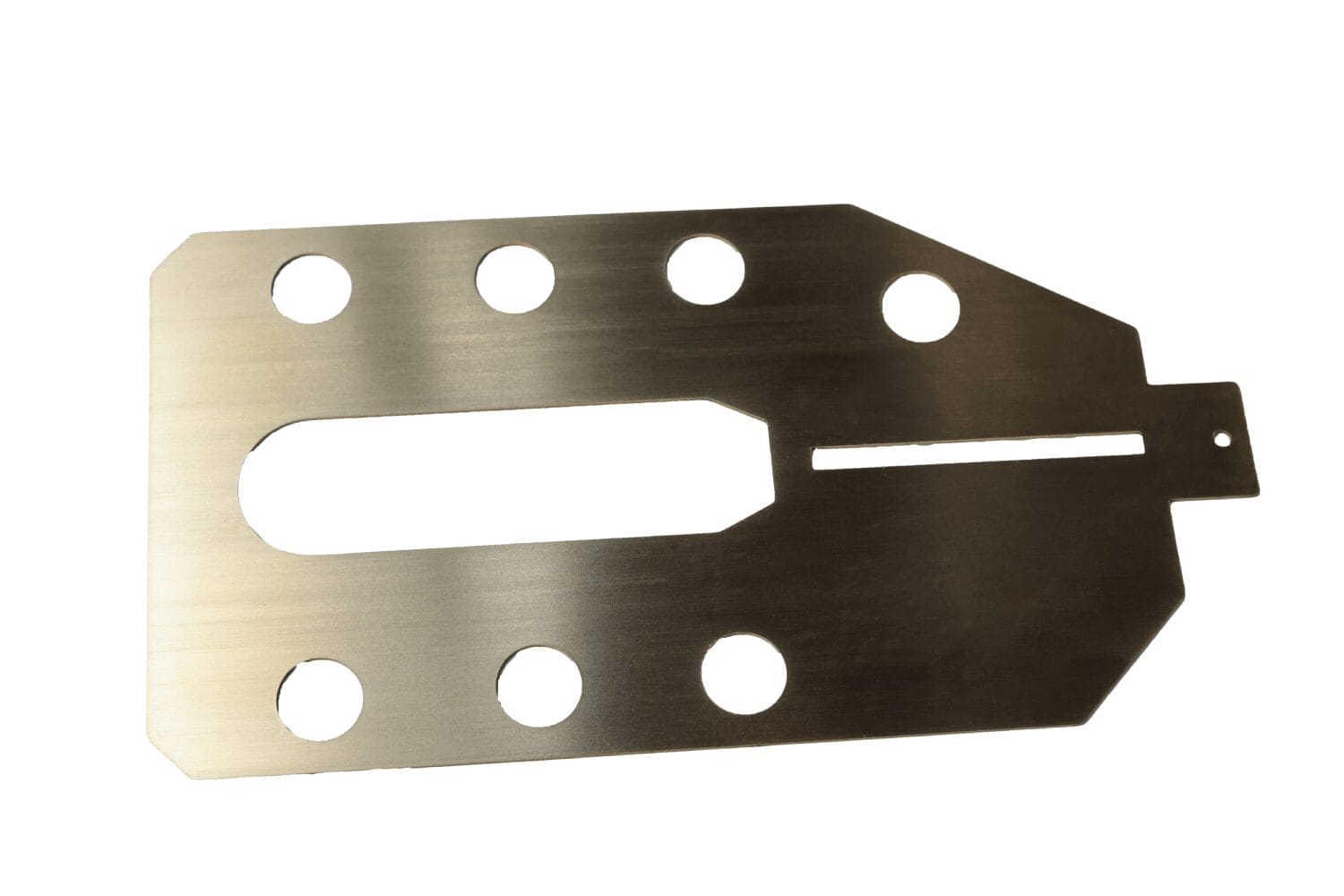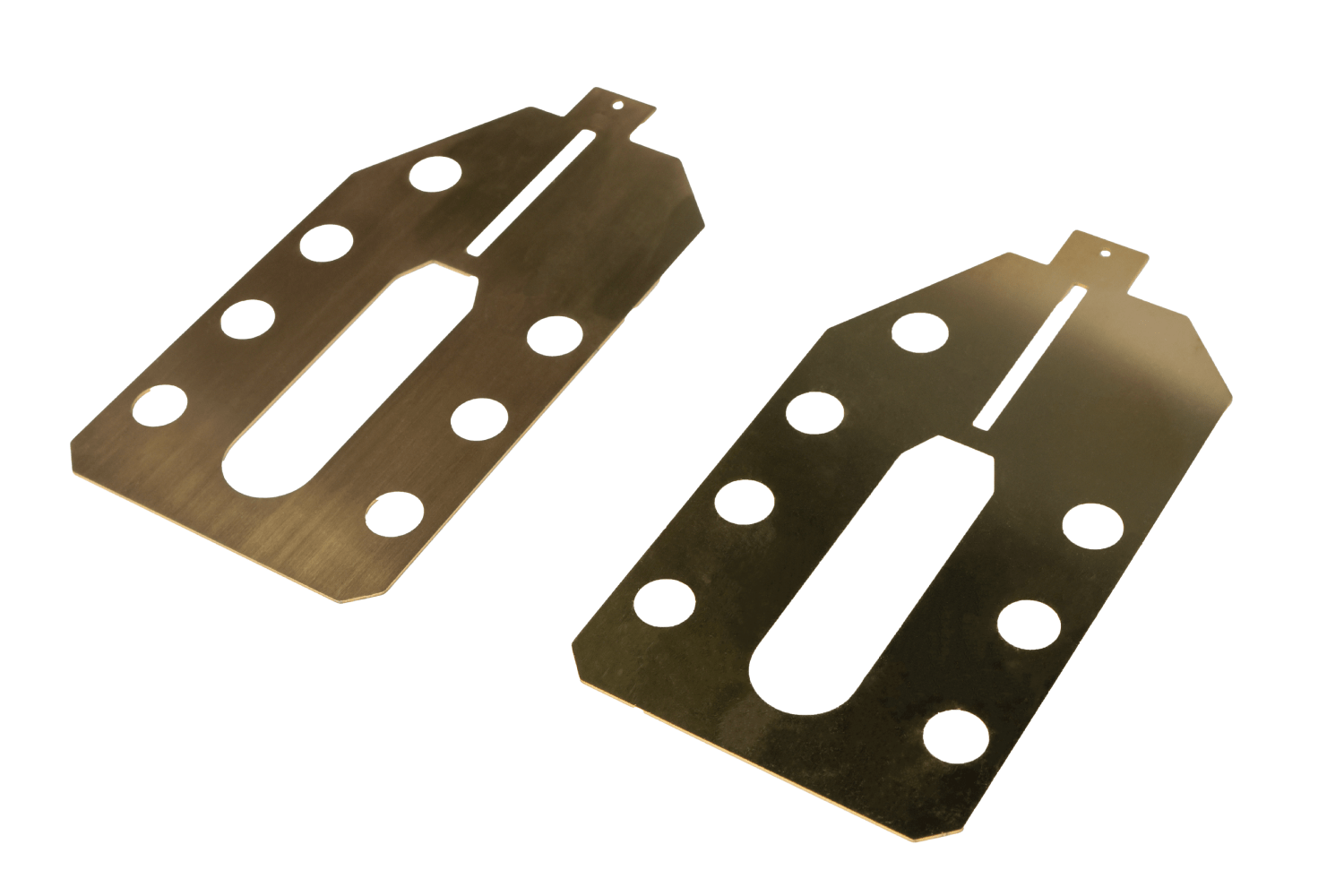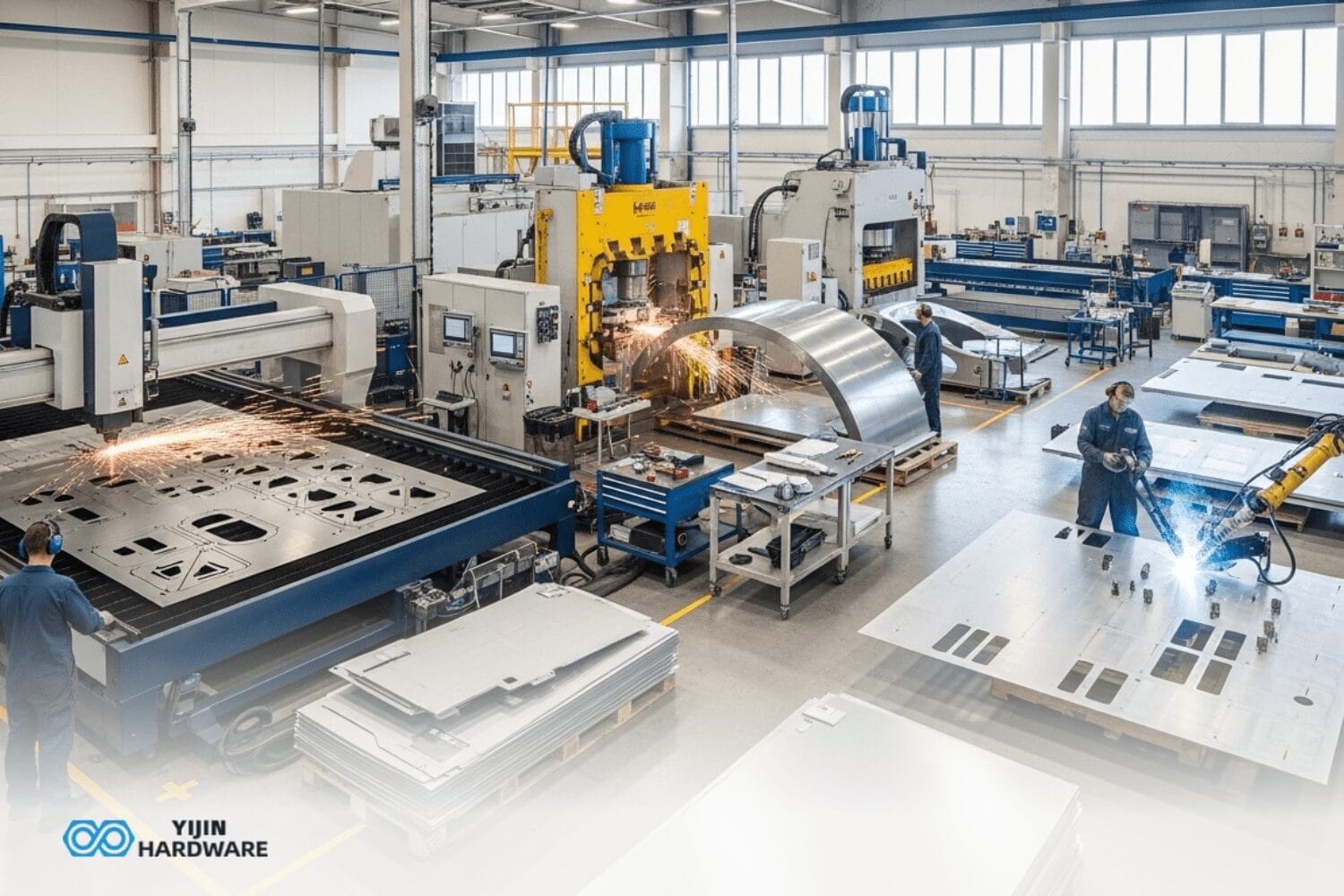Надежность и производительность аэрокосмического оборудования напрямую зависят от точности обработки и стабильности основных компонентов. Yijin Hardware является ключевым поставщиком аэрокосмических структурных компонентов, поэтому мы знаем уровень обработки прецизионный листовой металл стал ключевым фактором, сдерживающим прорыв в аэрокосмической технике. По сравнению с гражданским листовым металлом, обработка по аэрокосмическому классу требует прорыва в адаптации к экстремальным условиям окружающей среды, точности размеров и механических свойств.
В этом техническом документе систематически описываются технические требования, решения и инновационные направления прецизионной обработки листового металла аэрокосмического класса на примере типичных примеров, что дает практические рекомендации для отрасли.
Каковы основные технические требования к прецизионной обработке листового металла аэрокосмического класса?
| Категория | Резюме |
|---|---|
| Точный контроль | Детали из листового металла для авиакосмической промышленности требуют сверхвысоких допусков и плоскостности ≤0,02 мм/м², что достигается благодаря замкнутому циклу обработки и высокоточным инструментам контроля. |
| Адаптация материалов | Титан, Используются алюминий и высокотемпературные сплавы, требующие решений для борьбы с трудностями формирования, отскоком и сварочными трещинами. |
| Стандарт процесса | Детали должны быть без дефектов, с прочностью сварного шва ≥90% основного материала и поверхностями, отвечающими требованиям против окисления и Ra ≤ 0,8 мкм. |
Точный контроль
Детали из листового металла для аэрокосмической промышленности должны иметь допуски на размеры в пределах ±0,05 мм, а для ключевых компонентов (например, стыковочных интерфейсов) требуется точность ±0,01 мм и погрешности плоскостности ≤0,02 мм/м². Для этого требуется замкнутый процесс “обработка - контроль - коррекция” с использованием такого оборудования, как координатно-измерительные машины (с точностью 0,001 мм) и лазерные интерферометры для мониторинга в режиме реального времени.
Адаптация материалов
Основные материалы включают титановый сплав (TC4, устойчив к -196℃~600℃, прочность на сжатие ≥800MPa), высокопрочный алюминиевый сплав (2A12, легкий и устойчивый к коррозии), и высокотемпературный сплав (GH4169, устойчив к высоким температурам выше 800℃). Необходимо решить такие проблемы, как сложность формирования материала, например, низкий модуль упругости и легкость отскока титанового сплава, а также легкость растрескивания при сварке.
Стандарт процесса
Трещины, поры и другие дефекты не допускаются, а прочность сварного шва должна превышать 90% основного материала (например сварка трением с перемешиванием); обработка поверхности должна отвечать требованиям антиоксидации (например анодирование) и низкой шероховатостью (Ra≤0,8 мкм) для обеспечения стабильной работы космического аппарата в космической среде.


Анализ типичных примеров применения
Пример 1: Обработка кадров пеленгации низкоорбитальных спутников
Болевые точки спроса: Рама должна удовлетворять двойным целям “легкий вес + высокая прочность” (вес ≤ 5 кг, прочность на сжатие ≥ 750 МПа), а также должна быть совместима с многокомпонентной стыковкой, с погрешностью соосности отверстий ≤ 0,03 мм.
Решение:
- В качестве материала используется листовой титановый сплав TC4 (толщина 2-3 мм), а сложная контурная резка достигается за счет лазерная резка (точность ±0,05 мм);
- Используйте гибочный станок с ЧПУ (точность угла ±0,1°), чтобы формировать пошагово, и фиксируйте специальным приспособлением после каждого процесса, чтобы избежать пружинящего отката;
- Ключевые стыковочные отверстия сверлятся с помощью пятиосевой обрабатывающий центр (допуск отверстия H7), а внутреннее качество проверяется ультразвуковым контролем;
- Сварка принимает технология сварки трением с перемешиванием для уменьшения тепловой деформации, а вибрационное старение используется для устранения напряжения после сварки.
Эффект от внедрения: Рама весит 4,8 кг, соосность отверстий составляет 0,02 мм, а после механических испытаний она выдерживает нагрузку, в 1,5 раза превышающую расчетную, что соответствует требованиям запуска спутников и эксплуатации на орбите.
Пример 2: обработка кабины двигателя ракеты-носителя
Болевые точки: Кабина должна выдерживать высокую температуру (свыше 600 °C) и высокое давление (1,2 МПа) во время работы двигателя. Требования к герметичности сварных швов требуют скорости утечки ≤1×10-⁹ Па・м³/с и общей погрешности округлости ≤0,1 мм/м.
Решение:
- В качестве материала используется высокотемпературный сплав GH4169 (толщина 4-5 мм), а инкрементное формование Используется технология (деформация каждого прохода контролируется в пределах 5%) для достижения цилиндрической формы поверхности и предотвращения растрескивания материала;
- Продольный шов сваривается с помощью электронно-лучевая сварка (работает в вакууме, соотношение глубины и ширины шва 8:1), а дефекты после сварки выявляются с помощью рентгеновского контроля;
- Фланцы на обоих концах кабины обрабатываются Токарная обработка на станках с ЧПУ для обеспечения соосности с кабиной;
- При испытании на герметичность используется гелиевый масс-спектрометрический течеискатель для всесторонней проверки сварных швов и межфланцевых соединений.
Результаты внедрения: Погрешность округлости кабины составляет 0,08 мм/м, скорость утечки - 5×10-¹⁰ Па・м³/с, отсутствие деформации после 10 испытаний на термический цикл (-50℃~600℃), что соответствует требованиям для запуска ракеты.
Пример 3: Обработка отражателя антенны космического аппарата
Болевые точки спроса: Отражающая поверхность должна обладать сверхвысокой точностью (плоскостность ≤ 0,02 мм/м²), чтобы обеспечить эффективность приема сигнала, и должна обладать характеристиками защиты от космического излучения, с шероховатостью поверхности Ra ≤ 0,4 мкм.
Решение:
- Материал - листовой алюминиевый сплав 2A12 (толщина 1,5 мм), с использованием точное растяжение Технология (скорость растяжения 5 мм/мин, температура 200℃), а также специализированные пресс-формы для контроля точности формовки;
- После формирования, дробеструйное упрочнение (диаметр дроби 0,1 мм) используется для повышения твердости поверхности (HV ≥ 120) и уменьшения деформации при движении;
- Обработка поверхности принимает твёрдое анодирование (толщина пленки 15-20 мкм), а плоскостность определяется с помощью лазерного интерферометра;
- Края соединяются с основным материалом с помощью лазерная сварка и затем отшлифованы прецизионным шлифовальным кругом.
Эффект от внедрения: Плоскость отражающей поверхности составляет 0,018 мм/м², шероховатость поверхности Ra=0,3 мкм, а эффективность приема сигнала повышена на 15% по сравнению с традиционными процессами, что соответствует требованиям миссий по исследованию дальнего космоса.
Каковы ключевые технологические прорывы и инновации в области прецизионного листового металла для аэрокосмической промышленности?
Инновации в технологии прецизионного литья
Мы достигли прорыва в технологии формования с низким напряжением для труднообрабатываемых материалов, таких как титановые сплавы и высокотемпературные сплавы. Оптимизируя параметры формовки (такие как температура и скорость деформации) с помощью конечно-элементного моделирования, мы уменьшили погрешности пружинения и повысили точность формовки сложных конструкционных деталей на 20%.
Применение специальных сварочных процессов
Широкомасштабное применение таких технологий, как сварка трением с перемешиванием и электронно-лучевая сварка, позволило решить проблемы больших тепловых деформаций и нестабильного качества шва при традиционной дуговой сварке, а также повысить квалификационный уровень сварки листовых деталей аэрокосмического назначения с 85% до 99,5%.
Цифровая система обнаружения с замкнутым контуром
Построив цифровую систему “обработка-инспекция-данные-обратная связь-коррекция процесса” и объединив технологию цифрового двойника для моделирования процесса обработки, можно заранее предсказывать ошибки, тем самым повышая уровень квалификации первой партии продукции до более чем 90% и сокращая цикл НИОКР на 30%.
Какое будущее ждет прецизионный листовой металл аэрокосмического класса?
В будущем мы будем продвигать Планирование процессов с помощью искусственного интеллекта (например, оптимизация траекторий гибки на основе машинного обучения) и гибкие производственные линии (для адаптации к потребностям небольших партий нескольких сортов), а также ускорение внутреннего замещения высококлассного оборудования (например, высокоточных гибочных станков с ЧПУ) и материалов (например, отечественного производства GH4169) для снижения зависимости от зарубежных стран.
Освоение глубокого космоса (например, Марса) предъявляет повышенные требования к деталям из листового металла, такие как устойчивость к низким температурам до -200 °C и надежная защита от радиации, что требует разработки новых композитных материалов (например, керамических покрытий на основе металла) и технологий обработки; кроме того, требования к партиям для коммерческого аэрокосмического сектора также требуют баланса между “точностью” и “стоимостью” и продвижения стандартизации процессов.
Заключительные размышления
Прецизионная обработка листового металла аэрокосмического класса - важнейший этап в аэрокосмической технике, от проектирования до реализации. Технологические прорывы в этой области напрямую способствуют скачкообразному развитию аэрокосмической промышленности нашей страны. В будущем, благодаря сочетанию технологических инноваций и промышленного сотрудничества, мы будем постоянно повышать точность обработки, совместимость материалов и интеллектуальные возможности. Это позволит создать более надежные основные компоненты для спутников, ракет, зондов дальнего космоса и другого оборудования, что поможет нашей стране перейти от статуса “космической державы” к статусу “космической сверхдержавы”.”
Вернуться к началу: Прецизионная обработка листового металла аэрокосмического класса - Белая книга









